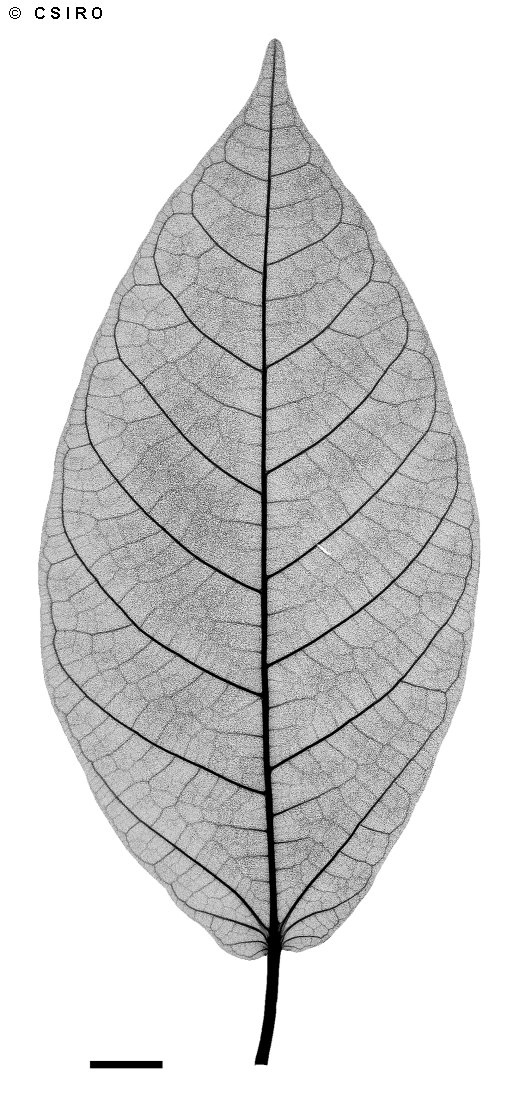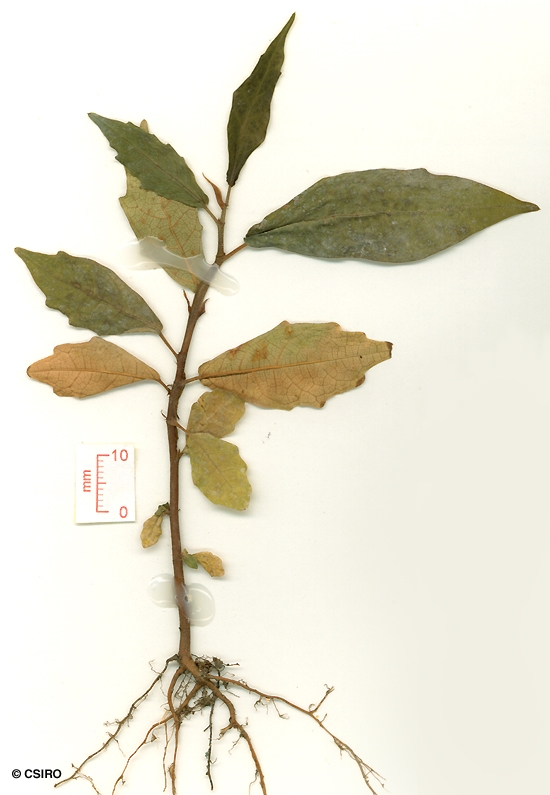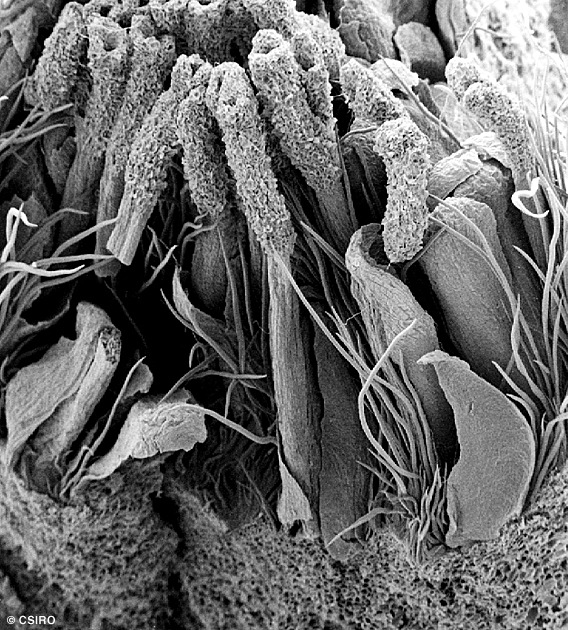Australian Tropical Rainforest Plants - Online edition
Ficus mollior F.Muell. ex Benth.





Bentham, G. (1873) Flora Australiensis 6: 173. Type: Queensland. Rockingham Bay, Dallachy.
Fig; FIG, SANDPAPER; Pascoe River Fig; Sandpaper Fig
Not a strangling fig. Generally a poorly formed, multistemmed tree. Seldom exceeding 30 cm dbh. Bark exudate turning brown or reddish brown on exposure.
Stipules about 1-2 cm long, hairy on the outer surface. Petioles and twigs produce a milky exudate. Leaf blades about 10-18 x 5-9 cm. Two flat glands visible on the underside of the leaf blade at the very base, in the forks of the basal lateral veins. Younger leafy twigs and petioles hairy. Oil dots visible with a lens.
Figs pedunculate, globular, about 13-15 x 12-16 mm. Orifice closed by interlocking apical and internal bracts.
Cotyledons orbicular, about 2-3 mm diam. At the tenth leaf stage: leaf blade elliptic, apex acuminate, base auriculate, margin crenate to bluntly serrate, teeth about 1-3 on each side along the upper 1/3 of the leaf blade, upper surface glabrous; oil dots very small, difficult to see with a lens; stipules sheathing the terminal bud, hairy along margins. Seed germination time 18 to 19 days.
Occurs in NEQ. Altitudinal range from near sea level to 800 m. Grows in well developed rain forest and gallery forest. Also occurs in Malesia.





